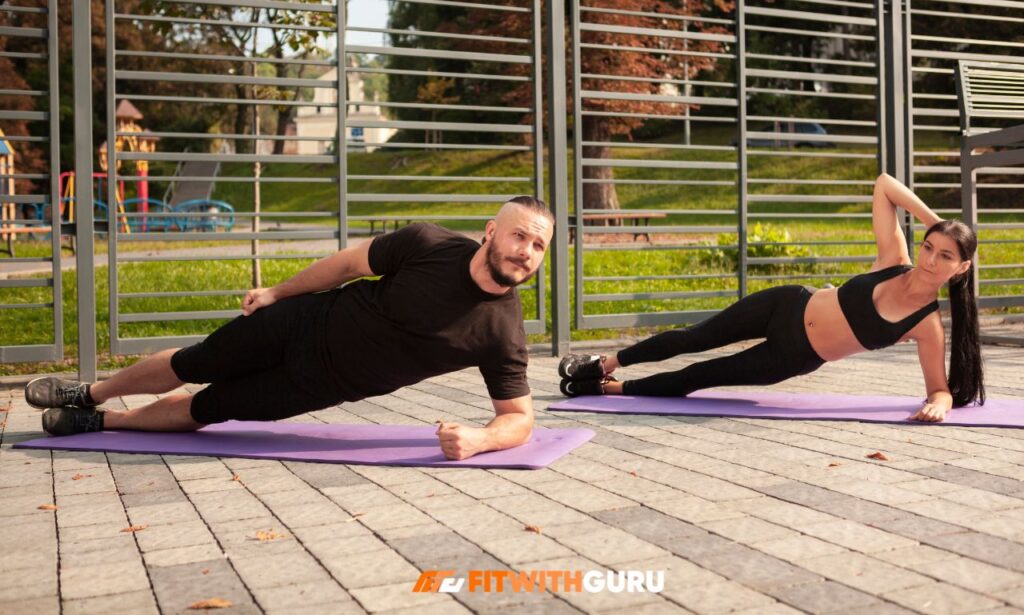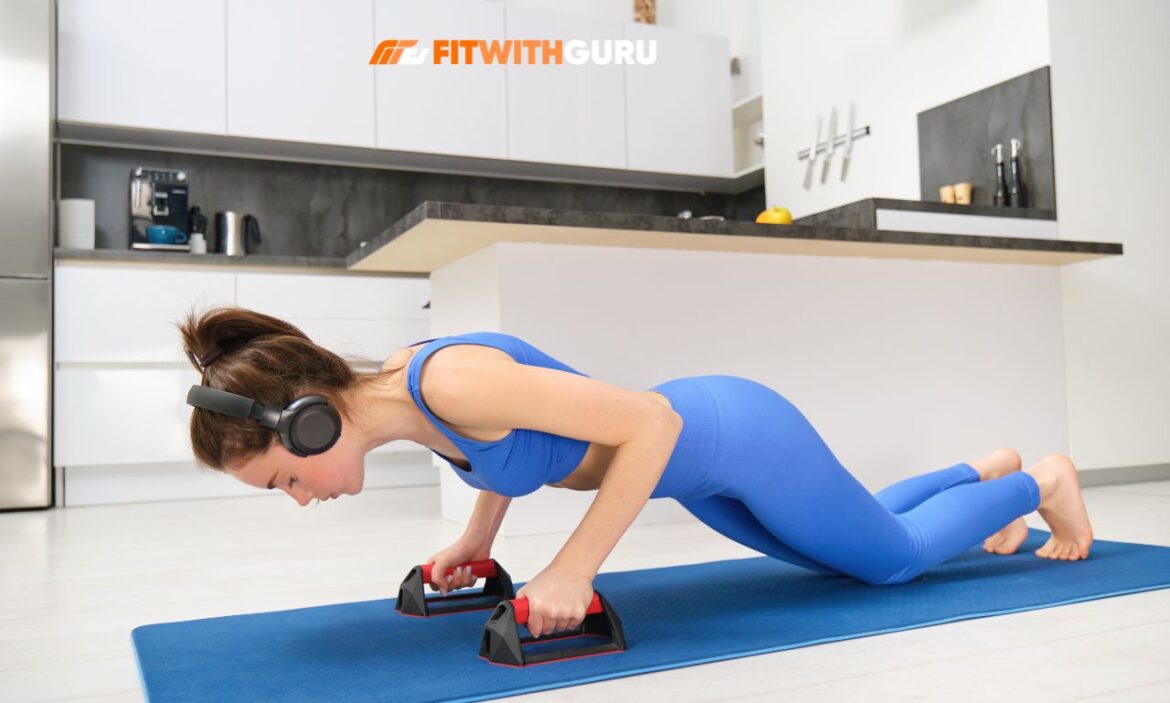A full bodyweight circuit workout delivers explosive power gains without requiring any equipment. In today’s fast-paced world, finding time for lengthy gym sessions feels nearly impossible for most people.
The beauty of circuit training lies in its efficiency—you’re moving from one exercise to the next with minimal rest, keeping your heart rate elevated while building strength simultaneously.
This approach transforms your body into the ultimate training tool, proving that you don’t need fancy machines or expensive memberships to achieve remarkable results.
What Makes a Full Bodyweight Circuit Workout Effective
Circuit workouts operate on a simple yet powerful principle: consecutive exercises targeting different muscle groups with limited rest periods.
Your body becomes both the resistance and the challenge, forcing multiple muscle groups to work in harmony.
The metabolic demand skyrockets when you chain exercises together without lengthy breaks between movements.
Research consistently shows that bodyweight circuit exercises create significant improvements in both aerobic capacity and muscular endurance within just 20 minutes.
Power development happens when you push your muscles to generate force quickly—think explosive push-ups, jump squats, and burpees that challenge your fast-twitch muscle fibers.
Essential Components of a Bodyweight Circuit No Equipment
Creating an effective bodyweight circuit with no equipment requires strategic exercise selection and proper workout structure.
Every circuit should include movements from these five fundamental patterns: push, pull, squat, hinge, and core stabilization.
The push category encompasses variations such as push-ups, pike push-ups, and decline push-ups, which target the chest, shoulders, and triceps.
Squats and their variations—such as jump squats, pistol squats, and Bulgarian split squats, build lower-body power and explosive strength.
Hip hinge patterns, including single-leg deadlifts, glute bridges, and good mornings, help develop strength in the posterior chain.
| Exercise Category | Power-Focused Movements | Target Areas |
| Push | Explosive Push-ups, Plyo Push-ups | Chest, Shoulders, Triceps |
| Squat | Jump Squats, Pistol Squats | Quads, Glutes, Calves |
| Hinge | Single-Leg Deadlifts, Nordic Curls | Hamstrings, Glutes, Lower Back |
| Core | Plank Variations, Mountain Climbers | Abs, Obliques, Lower Back |
Full Bodyweight Circuit Workout Plan: The 20-Minute Structure
A full bodyweight circuit workout plan maximizes results by following a specific time-based structure that maintains intensity throughout.
The workout consists of four 5-minute rounds, each containing five exercises performed for 40 seconds, followed by a 20-second transition period.

1 Round: Lower Body Power
- Jump Squats (explosive upward drive)
- Alternating Reverse Lunges (controlled descent, powerful return)
- Glute Bridges (squeeze at the top)
- Wall Sit (isometric hold)
- High Knees (maximum speed)
Round 2: Upper Body Strength
- Push-ups (chest to ground)
- Pike Push-ups (elevated hips)
- Tricep Dips (using a chair or step)
- Plank to Down Dog (dynamic movement)
- Diamond Push-ups (close hand position)
Round 3: Total Body Power
- Burpees (full explosive movement)
- Mountain Climbers (rapid knee drives)
- Jumping Jacks (full range of motion)
- Squat to Press (imaginary overhead press)
- Skater Hops (lateral power development)
4 Round: Core and Conditioning
- Plank Jacks (maintain plank position)
- Russian Twists (controlled rotation)
- Bicycle Crunches (opposite elbow to knee)
- Leg Raises (slow and controlled)
- Hollow Body Hold (maintain tension)
Full Bodyweight Circuit Workout for Beginners: Modification Strategies
A full bodyweight circuit workout for beginners requires intelligent scaling to prevent injury while building foundational strength.
New exercisers should reduce the work intervals to 30 seconds with 30-second rest periods, creating a 1:1 work-to-rest ratio.
Replace jumping movements with their low-impact counterparts—regular squats instead of jump squats, step-backs instead of burpees.
Push-ups can be modified to knee push-ups or incline push-ups against a wall or elevated surface, reducing the percentage of body weight lifted.
The beginner should focus on mastering proper form before increasing speed or intensity, treating each repetition as practice rather than punishment.
Starting with just two rounds (10 minutes total) allows adaptation without overwhelming the nervous system or creating excessive muscle soreness.
Bodyweight Workout Program for Men: Building Progressive Overload
A bodyweight workout program for men requires strategic progression methods, as simply adding weight plates to the bar is not effective.
Progressive overload through bodyweight training can be achieved through five primary methods: increasing volume, reducing rest periods, enhancing range of motion, manipulating tempo, and incorporating advanced variations.
Volume increases happen by adding more rounds to your circuit—starting with two rounds and building to six rounds over several weeks.
Rest reduction transforms a workout significantly; decreasing rest from 60 seconds to 30 seconds, then to 20 seconds, creates entirely different metabolic demands.
Tempo manipulation involves slowing down the eccentric (lowering) phase to 3-4 seconds, creating significant time under tension.
| Progression Method | Example | Timeline |
| Volume Increase | 2 rounds to 6 rounds | 4-6 weeks |
| Rest Reduction | 60s to 20s rest | 3-4 weeks |
| Tempo Changes | Regular to 4-second eccentric | 2-3 weeks |
| Advanced Variations | Two-arm to one-arm push-ups | 6-8 weeks |
Maximizing Power Output in Bodyweight Circuit Exercises
Power development requires understanding the relationship between force production and movement velocity in your training sessions.
The first three repetitions of any explosive movement generate the highest power output, which is why quality trumps mindless quantity.
Rest periods matter tremendously for power training—too short and you’re training endurance, not power; too long and you lose the circuit effect.
The sweet spot for power-focused circuits is 15-20 seconds between exercises, allowing for sufficient time to maintain explosive capacity without full recovery.
Landing mechanics deserve equal attention to jumping mechanics; soft, controlled landings protect your joints while training deceleration strength.

Common Mistakes in Full Bodyweight Circuit Workouts
The rush to complete a circuit often sacrifices movement quality for movement quantity, creating ingrained poor patterns.
Partial range of motion represents the most frequent error—half squats, shallow push-ups, and abbreviated pull-ups rob you of strength gains.
The proper breathing pattern involves exhaling during exertion (pushing up, jumping up) and inhaling during the easier phase (lowering down).
Taking 3-5 seconds to establish proper body position before each exercise dramatically improves both safety and effectiveness.
Nutrition and Recovery for Optimal Circuit Training Results
Training intensity means nothing without adequate recovery and proper nutrition to support adaptation and power development.
Protein intake should be 0.7-1 gram per pound of body weight daily, distributed across 3-4 meals, for optimal muscle protein synthesis.
Carbohydrates fuel high-intensity circuit training; consuming 30-50 grams of carbs 1-2 hours before your workout optimizes performance capacity.
Sleep represents your most powerful recovery tool—seven to nine hours of sleep nightly allows for hormonal optimization and nervous system recovery.
Dehydration significantly reduces power output, so drinking half your body weight in ounces daily helps maintain optimal performance levels.
Frequently Asked Questions
How often should I do a full bodyweight circuit workout?
Performing bodyweight circuits three to four times per week provides optimal results for most individuals. This frequency allows for 48-72 hours between sessions, providing adequate recovery while maintaining consistent training stimulus. Beginners should start with 2-3 sessions per week and gradually increase the frequency as adaptation occurs.
Can bodyweight circuits build muscle as effectively as weight training?
Bodyweight training builds muscle effectively through high volume and progressive tension, especially for beginners and intermediates. The key lies in continuously challenging your muscles through advanced variations and increased time under tension. Research shows that bodyweight training produces comparable muscle growth when total volume and intensity match those of traditional weightlifting.
What’s the best time of day for power-focused circuit workouts?
Power output peaks in late afternoon (4-6 PM) when body temperature, hormone levels, and nervous system activation reach optimal levels. However, the best workout time is whenever you can consistently train with full effort and focus. Consistency matters more than timing—regular training at any hour produces better results than sporadic, perfectly timed sessions.
How long before I see results from bodyweight circuit training?
Initial strength improvements typically occur within 2-3 weeks as your nervous system adapts and movement patterns become more efficient. Visible physique changes typically emerge after 6-8 weeks of consistent training combined with proper nutrition. Cardiovascular improvements are noticeable within 3-4 weeks of regular training, with significant increases in endurance.
Do I need rest days between full bodyweight circuit workouts?
Rest days are essential for adaptation, muscle repair, and performance improvement between intense training sessions. Your muscles grow during recovery, not during the workout itself, making rest days a crucial component of your program. Strategic rest doesn’t mean complete inactivity—active recovery through walking, stretching, or light yoga enhances circulation and reduces stiffness.
Conclusion
A full bodyweight circuit workout represents one of the most efficient training methods available for building power, strength, and endurance simultaneously.
The 20-minute format eliminates the standard excuse of insufficient time while delivering measurable results across multiple fitness parameters.
Success with bodyweight training requires the same dedication and progressive approach as any other training methodology—consistency, proper form, and intelligent progression determine your outcomes.
The ultimate advantage of bodyweight circuits extends beyond physical fitness—you’re building a sustainable practice that travels with you anywhere, anytime, without depending on external equipment or facilities.
Begin with a single 20-minute session this week, commit to the process for three months, and watch as your power, endurance, and confidence transform dramatically.

